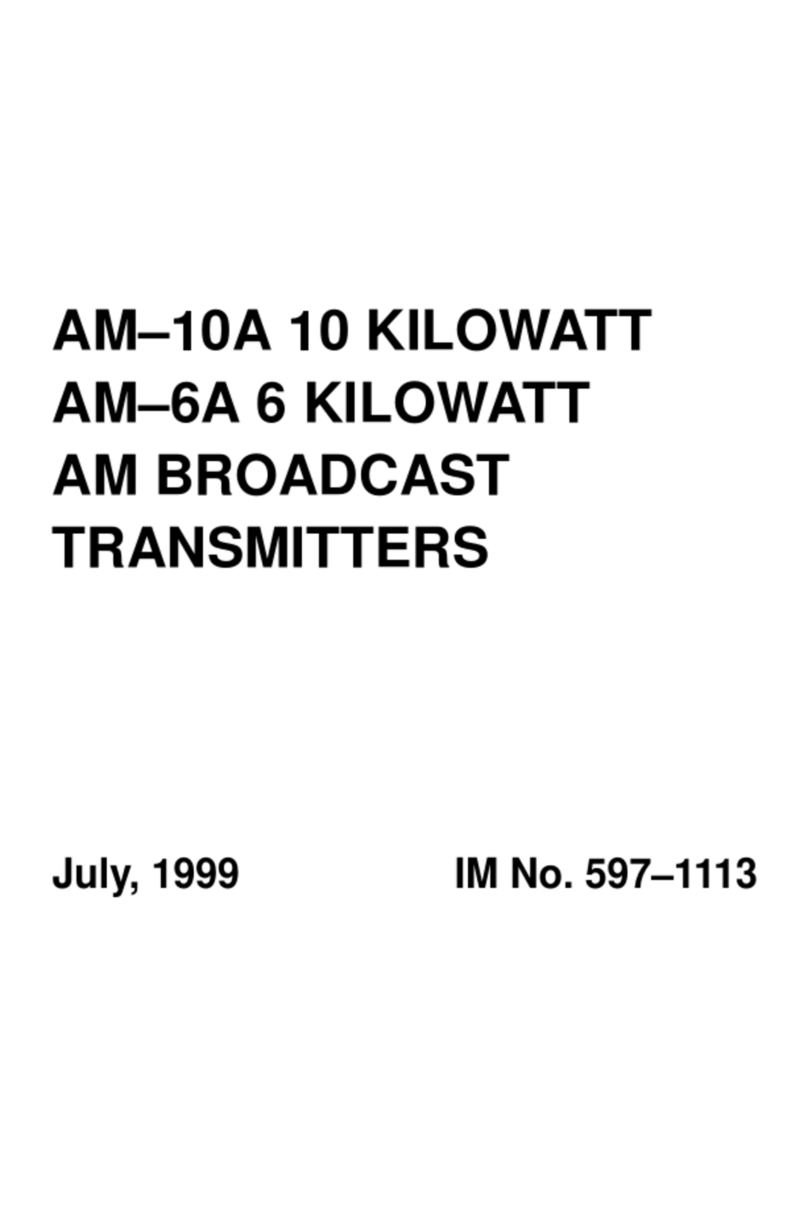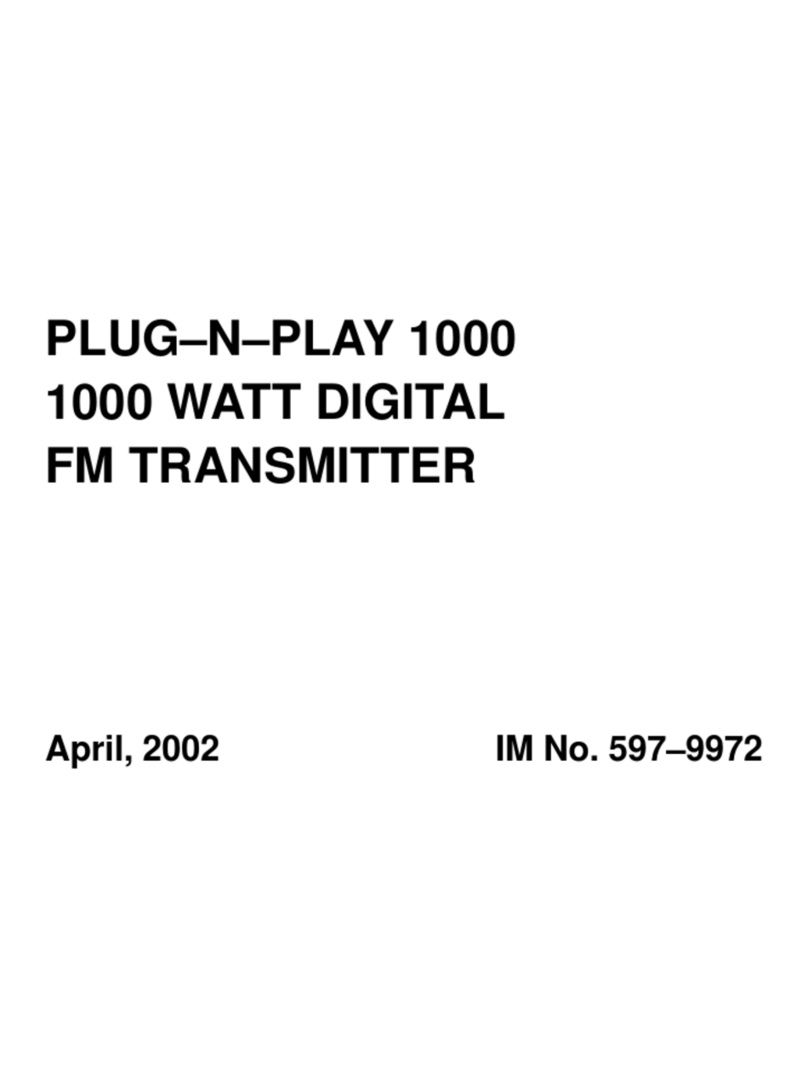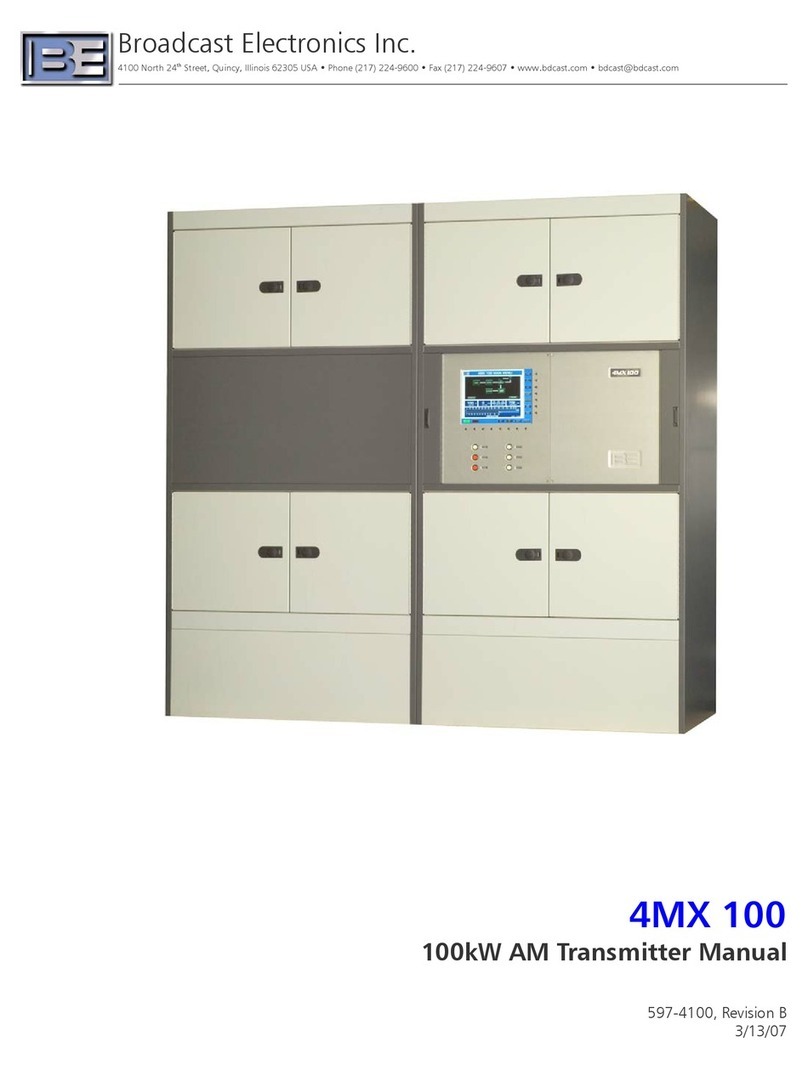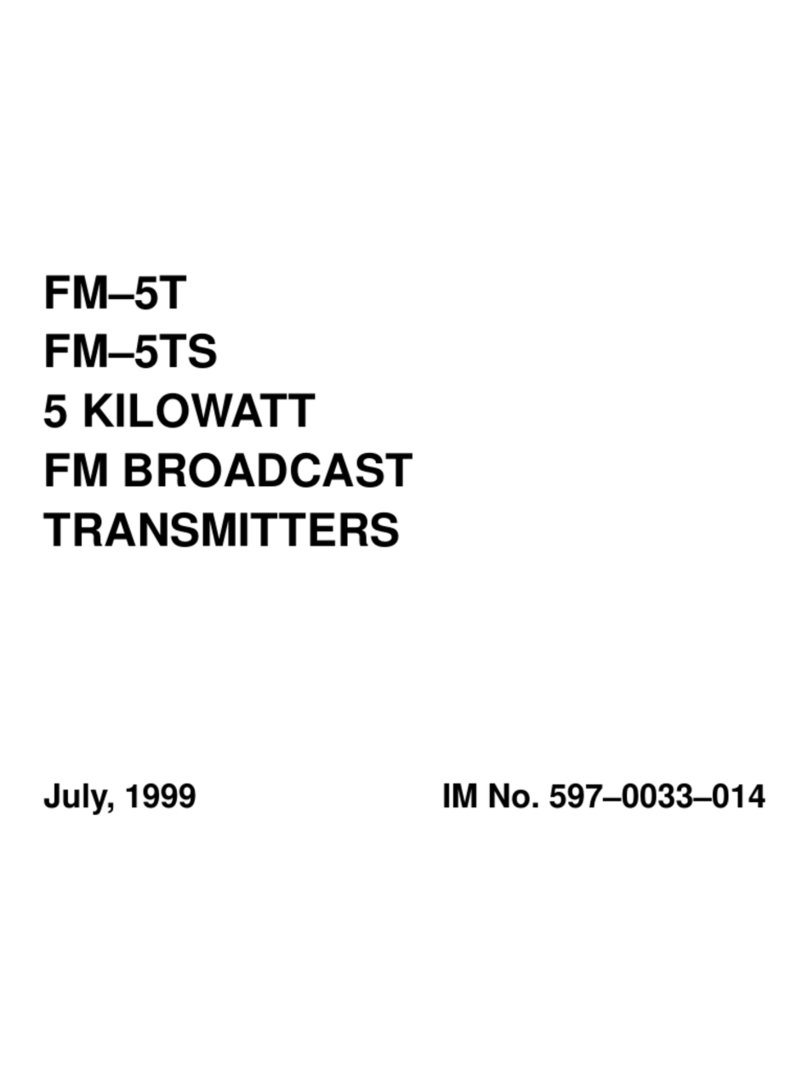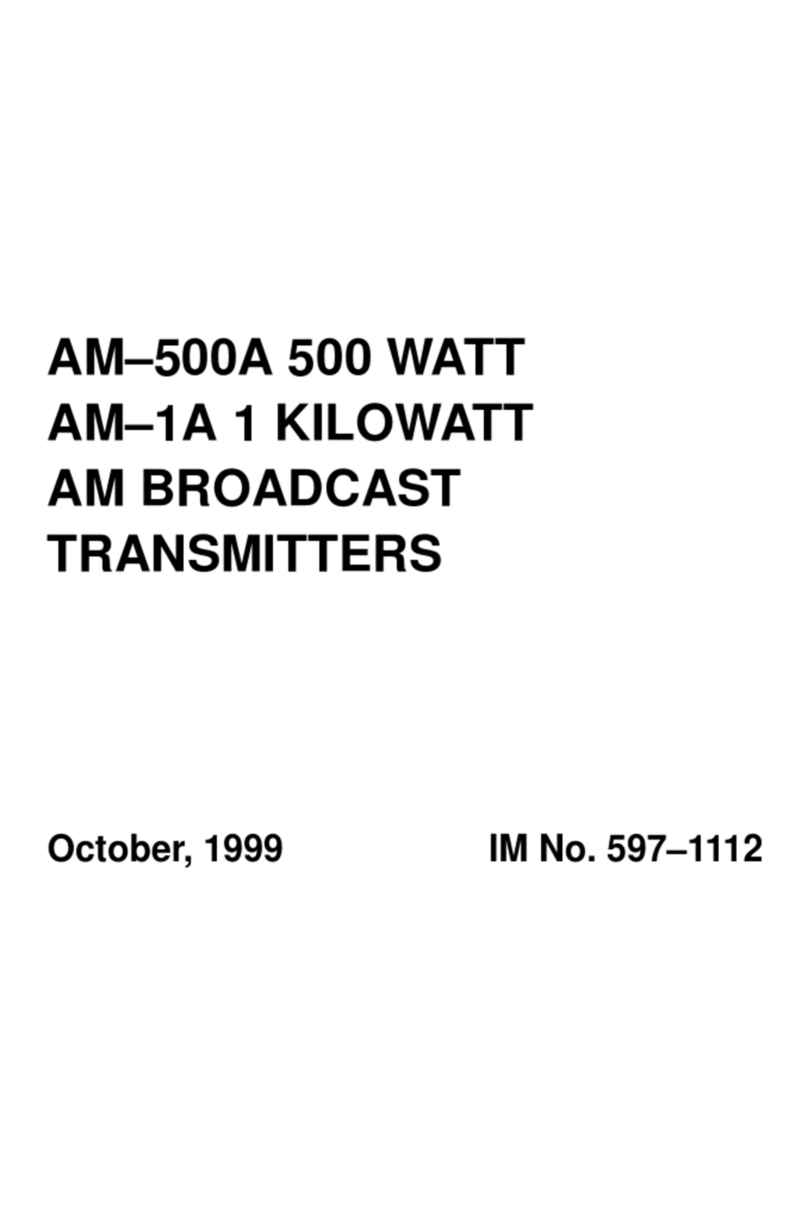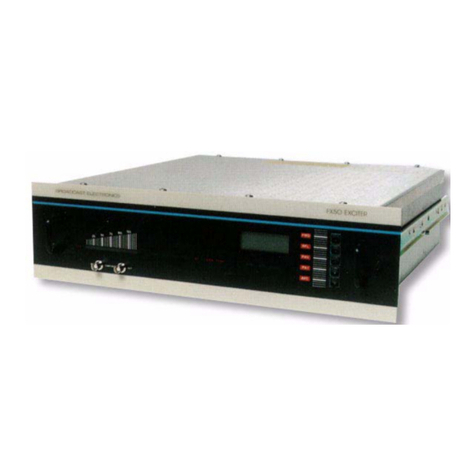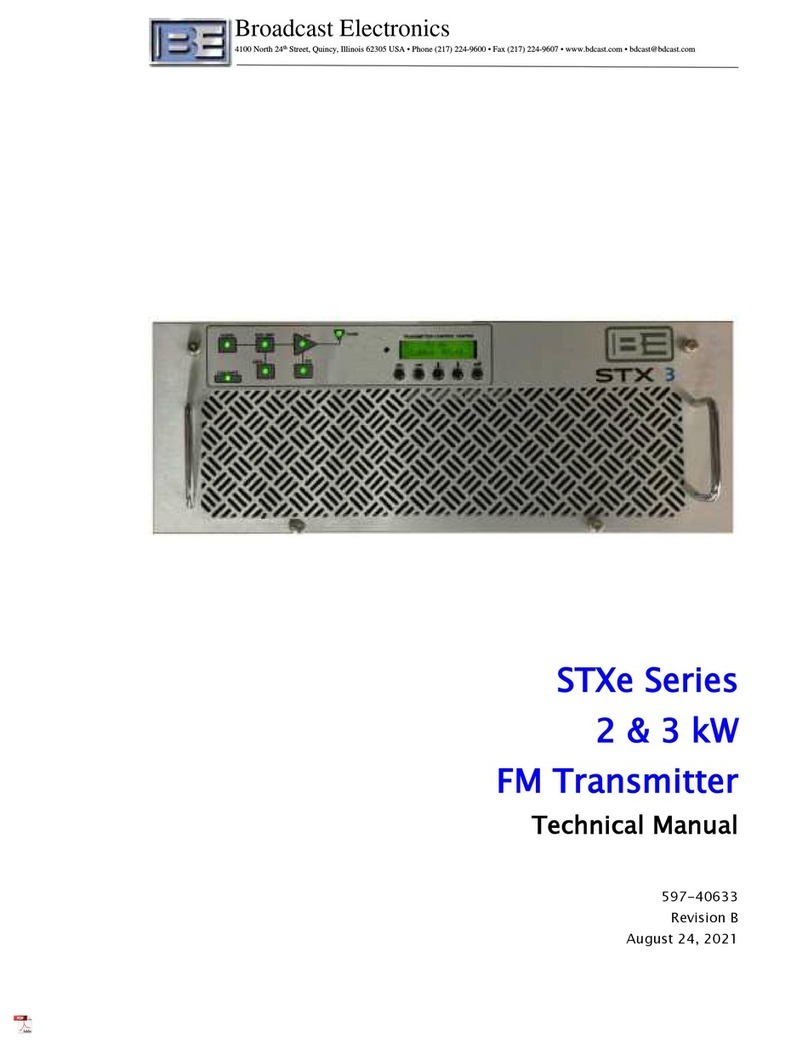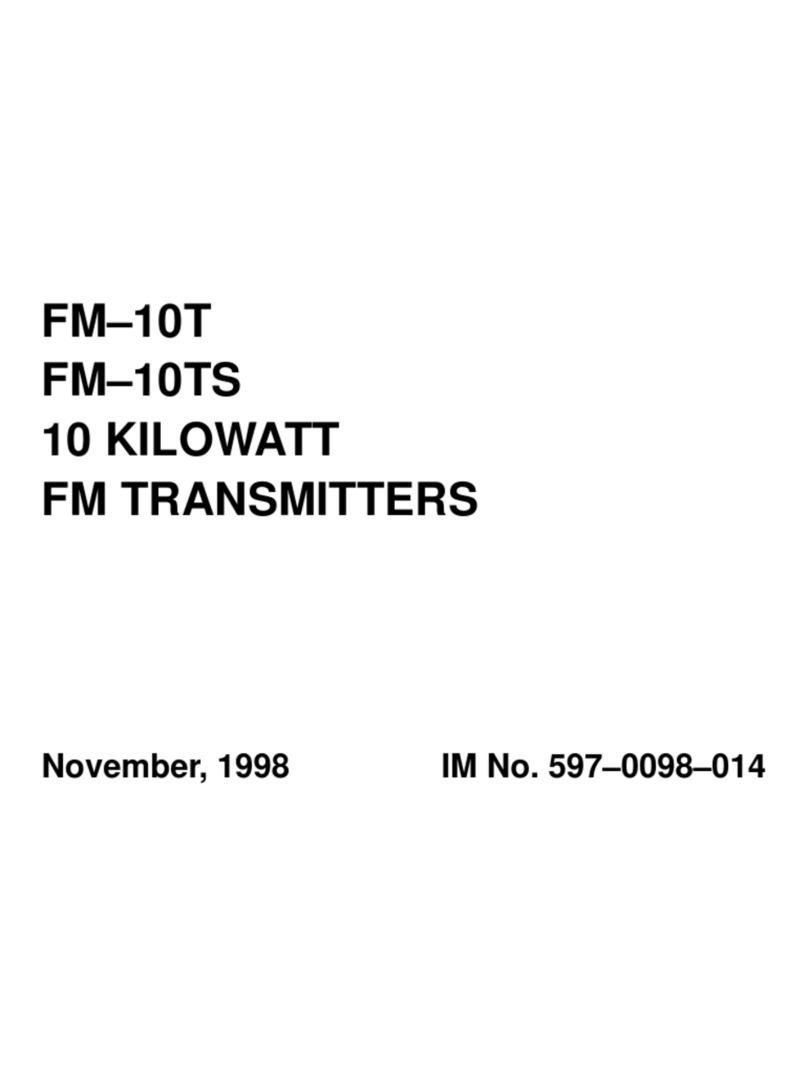
WARNING
OPERATING HAZARDS
READ THIS SHEET AND OBSERVE ALL SAFETY PRECAUTIONS
ALL PERSONS WHO WORK WITH OR ARE EXPOSED TO POWER TRANSISTORS MUST TAKE PRECAUTIONS
TO PROTECT THEMSELVES AGAINST POSSIBLE SERIOUS BODILY INJURY. EXERCISE EXTREME CARE
AROUND SUCH PRODUCTS. UNINFORMED OR CARELESS OPERATION OF THESE DEVICES CAN RESULT
IN POOR PERFORMANCE, DAMAGE TO THE DEVICE OR PROPERTY, SERIOUS BODILY INJURY, AND POSSI-
BLY DEATH.
DANGEROUS HAZARDS EXIST IN THE OPERATION OF POWER TRANSISTORS
The operation of power tubes and power transistors involves one or more of the following hazards, any one of which,
in the absence of safe operating practices and precautions, could result in serious harm to personnel.
A. HIGH VOLTAGE – Normal operating voltages can be deadly. Additional information follows.
B. RF RADIATION – Exposure to RF radiation may cause serious bodily injury possibly resulting in
blindness or death. Cardiac pacemakers may be affected. Additional information follows.
C. BERYLLIUM – OXIDE POISONING – Dust or fumes from BeO ceramics used as thermal links with
power transistors are highly toxic and can cause serious injury or death. Additional information follows.
D. HOT SURFACES – Surfaces of air–cooled heat sinks radiators can reach temperatures of 100 degrees
centigrade and cause burns if touched. Additional information follows.
E. RF BURNS – Circuit boards with RF power transistors contain high RF potentials. Do not operate an RF
power module with the cover removed.
HIGH VOLTAGE
The transmitter operates at voltages high enough to kill through electrocution. Personnel should always break the
primary circuits when access to the transmitter is required.
RADIO FREQUENCY RADIATION
Exposure of personnel to RF radiation should be minimized, personnel should not be permitted in the vicinity of open
energized RF generating circuits, or RF transmission systems (waveguides, cables, connectors, etc.), or energized
antennas. It is generally accepted that exposure to “high levels” of radiation can result in severe bodily injury includ-
ing blindness. Cardiac pacemakers may be affected.
The effect of prolonged exposure to “low level” RF radiation continues to be a subject of investigation and controver-
sy. It is generally agreed that prolonged exposure of personnel to RF radiation should be limited to an absolute mini-
mum. It is also generally agreed that exposure should be reduced in working areas where personnel heat load is
above normal. A 10 mW/cm2per one tenth hour average level has been adopted by several U.S. Government agen-
cies including the Occupational Safety and Health Administration (OSHA) as the standard protection guide for em-
ployee work environments. An even stricter standard is recommended by the American National Standards Institute
which recommends a 1.0 mW/cm2per one tenth hour average level exposure between 30 Hz and 300 MHz as the
standard employee protection guide (ANSI C95.1–1982).
RF energy must be contained properly by shielding and transmission lines. All input and output RF connections, such
as cables, flanges and gaskets must be RF leakproof. Never operate a power tube without a properly matched RF
energy absorbing load attached. Never look into or expose any part of the body to an antenna, open RF generating
circuit, or RF transmission system while energized. Monitor the tube and RF system for RF radiation leakage at regu-
lar intervals and after servicing.
DANGER –– BERYLLIUM OXIDE CERAMICS (BeO) – AVOID BREATHING DUST OR FUMES
BeO ceramic material is used as a thermal link to carry heat from a transistor to the heat sink. Do not perform any
operation on any BeO ceramic which might produce dust or fumes, such as grinding, grit blasting, or acid cleaning.
Beryllium oxide dust or fumes are highly toxic and breathing them can result in serious personal injury or death. BeO
ceramics must be disposed of only in a manner prescribed by the device manufacturer.
HOT SURFACES
Heat sinks and reject loads are air–cooled or conduction–cooled. The air–cooled external surface can operate at a
high temperature (up to 100°C). All hot surfaces may remain hot for an extended time after the transmitter is oper-
ated to off. To prevent serious burns, take care to prevent and avoid any bodily contact with these surfaces both dur-
ing and for a reasonable cooling down period after operation.
